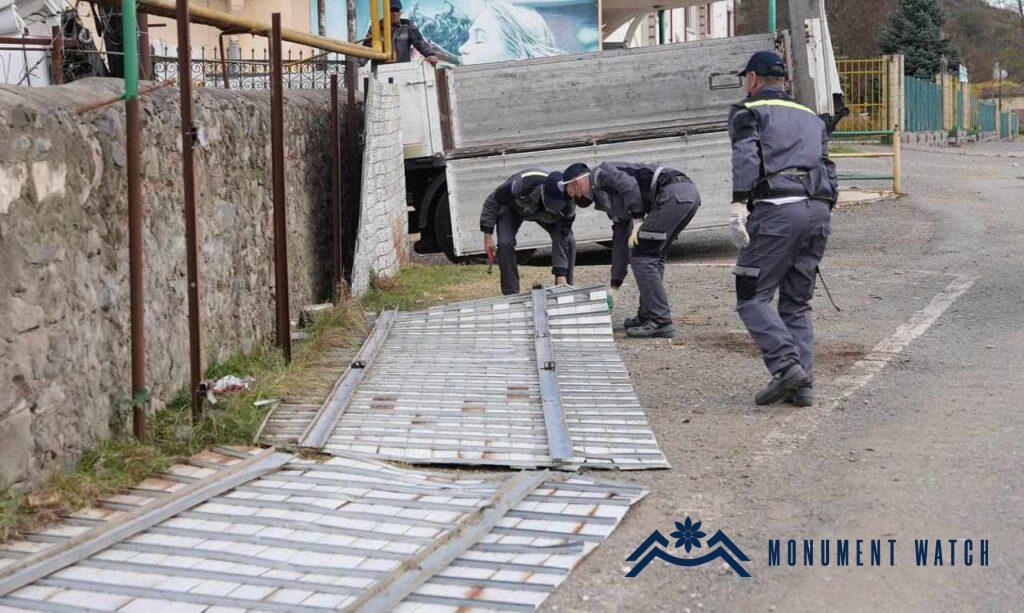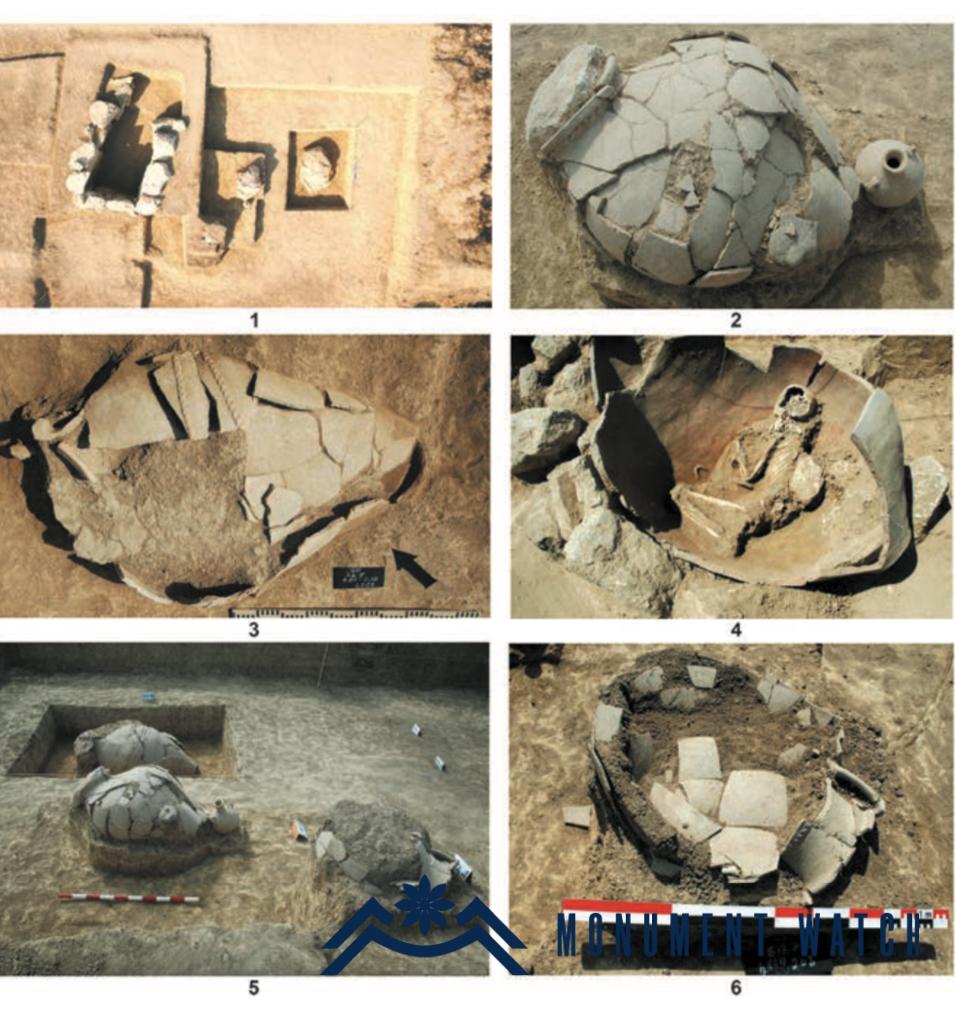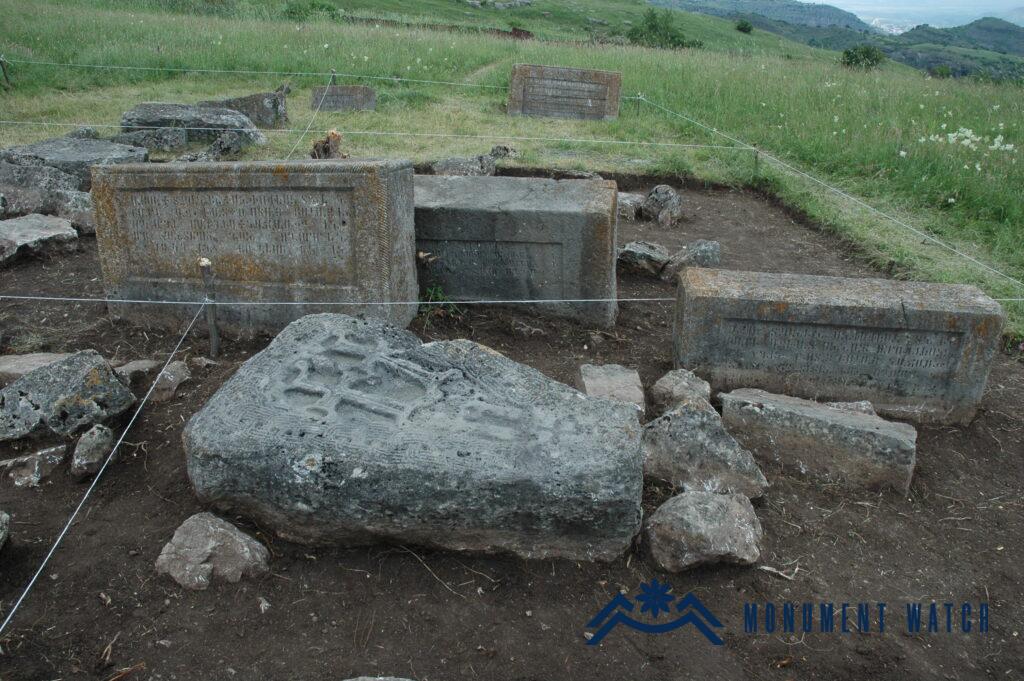To the questions of ethno-cultural belonging of anthropomorphic steale of the Artsakh steppes
In Near East, in the Eurasian plains, various stone monuments are found, especially beginning from the 4th-3rd millennia BC. The latter are found in Northwestern Iran, Central Asia, Siberia, Europe, the Northern regions of the Black Sea, the North Caucasus, Asia Minor and elsewhere. The stone anthropomorphic monuments stand out in this row, which began to spread more actively at the end of the 2nd millennium and at the beginning of the 1st millennium BC, which is probably related to the movements of different races. The monumental culture of Artsakh is most vividly expressed starting from the 1st millennium BC, appearing among a series of anthropomorphic stelae. The anthropomorphic stelae of Artsakh are one of the important components of the pre-Christian culture of the region. They are approximately rectangular, flat longitudinal slabs, which are divided into three parts by means of two wide horizontal grooves, “separating” the three parts of the body: the head, which occupies a little less than one third of the whole monument, the torso and the part below the waist. This section usually did not have a picture. It was simply lightly polished, intended for putting in the soil or a special foundation. The monuments are approximately 30-60 cm wide, 120-140 cm, sometimes up to 2-2.5 meters high and 20-40cm thick. The study area is located in the south-eastern part of the Lesser Caucasus, including the western part of the Kur-Aras valley, the eastern part of the Artsakh plain and the west end of the Mil plain. Combining information about other similar anthropomorphic stelae known in the region, examining and comparing them with volumetric solutions of Artsakh monuments, sculpture techniques, and attributes of sculptures, we come to the conclusion that the anthropomorphic stelae of Artsakh were made and erected between the 8th–6th centuries BC. By combining these data, it is important to find out the problem of the ethno-cultural affiliation of the steale, which is what we tried to do in this research. Article: https://monumentwatch.org/wp-content/uploads/2024/05/Еранян-Н.-К-вопросам-этнокультурной-принадлежности-антропоморфных-изваяний-арцахских-степей.pdf.
Targeting Artsakh’s cultural heritage via Azerbaijani media platforms
After the conclusion of the 44-day war in 2020, the Azerbaijani side launched an aggressive propaganda campaign aimed at appropriating the historical and cultural heritage of Artsakh, as well as distorting it, particularly through propaganda against Armenia. To grasp the extent of Azerbaijani propaganda efforts, it is crucial to monitor various Azerbaijani news outlets, mass media channels, and social media platforms. Collectively, these sources provide substantial data regarding the methods employed in propaganda aimed at appropriating Artsakh’s cultural heritage. The article focuses on the challenges posed by propaganda against Artsakh’s cultural heritage, exploring its methods and key arguments. More information: https://monumentwatch.org/wp-content/uploads/2024/02/R.Hovsepyan_AGV_Artsakh_2023.pdf.
The Pottery Burial Culture of Artsakh-Utik in the Context of Armenian-Caucasian Albanian Relations
The pottery burial culture in the ancient period extended across a significant portion of the Near East, the Mediterranean, and Asia Minor, encompassing the Armenian Highlands and Transcaucasia, reaching as far as the Kur River. Among all types of ancient burials in Artsakh and Utik, jar burials were the most common and archaeologically the most documented. Against the backdrop of the whole variety of burial structures, such as stone boxes, cists, and ground burials, jar burials became dominant, especially at the end of the first century BC and during the first centuries AD. The jar burials of Utik, such as those found in Mingechaur, Galatepe, and Garakobar, were studied by Azerbaijani archaeologists and presented as a culture typical of various Albanian tribes. This culture was considered simultaneous with the Yaloylu-tepe culture, which is characterized by soil burials with a strongly compressed skeleton and unique pottery. The Yaloylu-tepe culture is widespread on the right bank of the Kur River and is distinct from the jar burial culture. Examining the rites and properties of pottery burials found by excavations and accidentally found in Tigranakert of Artsakh, as well as other settlements of the region (Martakert, Chankatagh, Haterk) allows us to further expand the essential differences between Yaloylu-tepe and pottery burial cultures, which in turn served as an ethnic border in the ancient period. This provides a new argument for the concept of ethnic differentiation in the region during that time. Visit the following link for additional information: https://monumentwatch.org/wp-content/uploads/2024/02/A.Gabrielyan_AGV_Artsakh_2023.pdf.
Medieval Shushi through the Lens of Archaeological Research
The issues of Shushi’s ancient history, foundation, construction, and ethnic affiliation of its different monuments have appeared on the list of “justifications” for Azerbaijan’s aggressive intentions more than once. For decades, Azerbaijan’s government and intelligentsia have cultivated a myth among its people, according to which Shushi began and thrived as an Azerbaijani city and the cradle of Azerbaijani culture.



